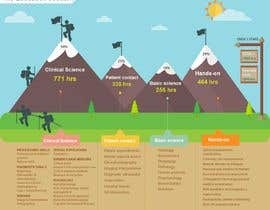Be Prepared To Unwind The Interesting Cellular Interactions Involved In Cold Laser Treatment And Its Utilization Of Light For The Function Of Recovery. Immerse On Your Own Further Right Into The Realm Of Science!
Be Prepared To Unwind The Interesting Cellular Interactions Involved In Cold Laser Treatment And Its Utilization Of Light For The Function Of Recovery. Immerse On Your Own Further Right Into The Realm Of Science!
Blog Article
Article Author-Krog Hutchison
You may have come across cold laser treatment as a promising therapy alternative for numerous conditions, however have you ever before wondered how it actually deals with a mobile degree? Recognizing the systems behind this therapy can clarify its efficiency in advertising recovery and lowering inflammation. By checking out the scientific research behind cold laser therapy, you'll get understandings right into the fascinating methods which light can influence mobile processes and promote tissue repair work.
How Cold Laser Therapy Works
To comprehend how cold laser therapy functions, you need to grasp the essential principles of how light power connects with organic cells. Cold laser therapy, additionally called low-level laser therapy (LLLT), utilizes specific wavelengths of light to pass through the skin and target hidden tissues. Unlike the intense lasers made use of in surgeries, cold lasers discharge reduced degrees of light that do not produce heat or cause damages to the tissues.
When cold therapy reach the cells, they're soaked up by parts called chromophores, such as cytochrome c oxidase in mitochondria. This absorption triggers a series of organic responses, including enhanced cellular power production and the release of nitric oxide, which boosts blood circulation and reduces inflammation.
Moreover, just click the following webpage can likewise promote the manufacturing of adenosine triphosphate (ATP), the power currency of cells, aiding in cellular repair work and regeneration processes.
Essentially, https://www.nature.com/articles/s41598-022-19947-2 of light power to advertise recovery and reduce pain in a non-invasive and gentle manner.
Mechanisms of Activity
How does cold laser treatment really work to create its therapeutic results on organic tissues?
Cold laser treatment, also known as low-level laser therapy (LLLT), operates with a procedure called photobiomodulation. When the cold laser is applied to the skin, the light energy permeates the cells and is soaked up by chromophores within the cells.
These chromophores, such as cytochrome c oxidase in the mitochondria, are then promoted by the light energy, bring about a cascade of biological responses. One essential mechanism of activity is the improvement of mobile metabolic rate.
The taken in light energy boosts ATP manufacturing in the mitochondria, which is essential for mobile function and repair service. Additionally, cold laser therapy helps to reduce inflammation by preventing inflammatory arbitrators and promoting the release of anti-inflammatory cytokines.
This anti-inflammatory effect adds to discomfort relief and tissue healing.
Restorative Impacts
Comprehending the therapeutic results of cold laser therapy includes identifying how the enhanced cellular metabolism and anti-inflammatory residential properties add to its positive results on organic cells.
When the cold laser is related to the damaged area, it stimulates the mitochondria within the cells, causing enhanced production of adenosine triphosphate (ATP), which is vital for cellular feature and repair service. This increase in cellular energy increases the recovery process by advertising tissue regeneration and reducing inflammation.
In addition, the anti-inflammatory buildings of cold laser treatment assistance to reduce discomfort and swelling in the targeted area. By hindering inflammatory arbitrators and promoting the release of anti-inflammatory cytokines, cold laser treatment aids in relieving discomfort and enhancing the general recovery action.
This reduction in swelling not only offers prompt relief but also supports lasting cells fixing.
Verdict
In conclusion, cold laser treatment functions by promoting mobile repair service and tissue regeneration with photobiomodulation. Its anti-inflammatory properties provide pain alleviation and lower swelling by preventing inflammatory conciliators.
This treatment uses a comprehensive method to healing, providing both prompt relief and long-term tissue repair advantages.
Via its systems of activity, cold laser therapy shows to be a reliable and promising treatment option for a range of conditions.
